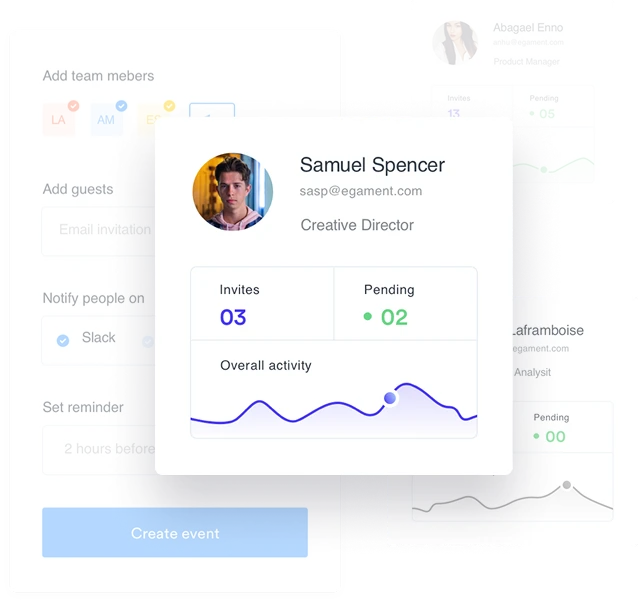Automated Attendance Management System: Transform Your Institution’s Operations in 2025
EdWeek Research Center Survey: Teachers spend an average of 13 hours weekly on non-instructional tasks, many of which could be automated.
https://www.edweek.org/teaching-learning/how-teachers-spend-their-time-a-breakdown/2022/04
Within those 3 hours of administrative work lies a hidden time drain that affects every classroom, every day: attendance management.
Imagine an institutional scenario where a faculty member steps into the classroom and, instead of utilizing the allotted lecture time in purely teaching, spends the first 15 minutes checking the classroom strength and registering attendance.
Later, this attendance needs to be transferred to multiple systems. Meanwhile, down the hall, the Head of the Department struggles with incomplete attendance reports needed for records management.
Additionally, faculties informing parents about their child’s absence manually consumes even more time.
This scenario plays out in thousands of institutions daily, highlighting a critical challenge: performing administrative tasks the traditional way is consuming valuable educational time and resources, and attendance management is one of those tasks.
However, forward-thinking institutions are discovering that automated attendance management systems offer a transformative solution.
Educational institutions worldwide grapple with attendance management complexities that extend far beyond simple record-keeping.
Research from UNESCO’s Institute for Statistics indicates that administrative inefficiencies, including manual attendance processes, contribute to reduced instructional time and increased operational costs.
Faculties face mounting pressure to maximize instructional time while managing administrative responsibilities. Manual attendance tracking creates a domino effect of inefficiencies:
Moreover, substitute staff often struggle with unfamiliar attendance procedures, leading to gaps in data collection and further complications.
Institutional administrators encounter their own set of challenges when dealing with traditional attendance systems. Monthly compliance reports that should take minutes stretch into hours of data compilation. Parent communication becomes reactive rather than proactive, with absence notifications arriving days after incidents occur.
Automated attendance management systems or robust student information systems like Academia, which offers an in-built attendance management module, represent a paradigm shift from reactive record-keeping to proactive educational support.
These sophisticated solutions leverage technology to streamline processes while enhancing accuracy and communication.
With Academia’s Attendance Module, faculty can mark attendance directly from mobile devices, biometric scanners, or RFID-based systems.
As soon as attendance is recorded, the data is instantly synced across the platform—keeping parents, admin, and academic departments informed in real-time. Whether a student is late or absent, the system updates their record instantly, triggers necessary alerts, and maintains accurate logs—without disrupting the teaching flow.
Explore more here: Academia Attendance Module
Human error in attendance tracking can have serious consequences, from miscalculations to compliance violations. Automated systems significantly reduce these risks through:
According to research, institutions using automated attendance systems report a 95% improvement in data accuracy compared to manual methods.
By removing repetitive manual tasks, institutions can free up their staff to focus on higher-value, impactful activities. Faculties can reclaim instructional time, administrative staff focus on strategic initiatives, and IT departments can spend less time troubleshooting data inconsistencies.
Modern attendance automation goes beyond basic record-keeping to provide actionable insights. Institutions can identify attendance trends, correlate patterns with academic performance, and implement targeted interventions for at-risk students.
These analytics capabilities enable educators to shift from reactive problem-solving to proactive student support, ultimately improving educational outcomes.
Automated systems revolutionize parent engagement through immediate notifications and comprehensive reporting. Instead of discovering absences days later, parents receive real-time alerts via SMS, email, or mobile app notifications.
When evaluating automated attendance systems/student information systems, educational institutions should prioritize solutions that offer:
Multi-Device Accessibility: Faculty can mark attendance using web, mobile apps, or biometric/RFID devices—ensuring flexibility across classrooms and campuses.
Advanced Reporting Capabilities: Generate on-demand reports ranging from class-wise summaries to institution-wide compliance analytics with customizable filters.
Enterprise-Ready Scalability: Whether it’s a single department or multiple campuses, Academia’s attendance system scales effortlessly with your institution’s growth.
As digital transformation accelerates, investing in attendance automation isn’t just about operational efficiency—it’s a strategic move to enhance teaching quality, compliance, and stakeholder satisfaction.
It shifts focus from repetitive admin tasks to student learning, collaboration, and growth.
The transformation from manual to automated attendance management represents more than a technological upgrade—it’s a strategic investment in educational excellence.
By eliminating time-consuming administrative tasks, improving data accuracy, and enhancing communication, these systems empower educators to focus on what matters most: student success.
Schools worldwide are discovering that automated attendance management systems don’t just solve operational challenges; they create opportunities for innovation and growth.
From real-time parent communication to predictive analytics that support student intervention, these tools are reshaping how educational institutions operate.
The question isn’t whether your school needs attendance automation—it’s how quickly you can implement it to start realizing these transformative benefits.
Ready to revolutionize your school’s attendance management? Discover how our comprehensive educational ERP platform can streamline your operations and enhance student outcomes. Schedule a personalized demo today or speak with our education specialists to explore customized solutions for your institution.

Experience Academia – Your partner in transforming campus operations, a trusted all-in-one ERP/SIS solution.
Get the latest insights, trends, and updates delivered straight to your inbox!
